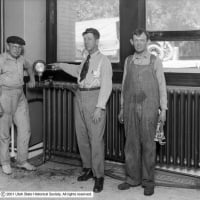Welcome! Here are the website rules, as well as some tips for using this forum.
Need to contact us? Visit https://heatinghelp.com/contact-us/.
Click here to Find a Contractor in your area.
If our community has helped you, please consider making a contribution to support this website. Thanks!
What do you think?
Options
heatboy
Member Posts: 1,468
I haven't seen anything else like this. It's a Watts air separator w/ flanges. Great idea! You can see the video at the Watts website.
<a href="http://www.watts.com/mediaCenter/default.asp?videoId=37">http://www.watts.com/mediaCenter/default.asp?videoId=37</a>
<a href="http://www.watts.com/mediaCenter/default.asp?videoId=37">http://www.watts.com/mediaCenter/default.asp?videoId=37</a>
There was an error rendering this rich post.
0
Comments
-
I think....
Watts is lucky to have Jim Earhardt in their employ.
More Earhardt innovation! Nothing better than having an experienced contractor at the helm.
Thanks for sharing Jeff.
ME0 -
I dig it.
Every part should come with a flanged option.0 -
Watts
Perfect for pumping away,0 -
Always Nice
Always nice to have soft spots along the system for repairs ... Extra external bracing would be needed down stream which should be added either wayThere was an error rendering this rich post.
0 -
pop the top
seems like a neat idea, but
for replacement, why can't one unscrew the top with a wrench, replace the internal medium part and screw the top back on.0 -
Seviceability
It comes apart for service, Devan. The top comes off to replace the float and the top part of the body comes off to clean/replace the media, which is different than the others on the market. The top has a manual vent (red) that is normally screwed down tight and also has the normal vent (black) that stays open two turns. One of the things I like is that fact that both caps can be closed while doing initial purge. We all know that if the fill mechanism is attached to the bottom, the vent is pressurized and will leak during initial purge if not closed off in some manner..There was an error rendering this rich post.
0 -
I like it
I have had issues with leaks I had to go and repair from others installs of the air separators. They seem to over tighten the threaded fittings and stretch the threads. Harder for them to do to the isolation flanges as the brass is twice as thick.Cost is what you spend , value is what you get.
cell # 413-841-6726
https://heatinghelp.com/find-a-contractor/detail/charles-garrity-plumbing-and-heating0 -
Over-Under,,,,
Sheesh,,, maybe you were just lucky Charlie? ;-)0 -
isolation
really cool to be able to isolate the air sep for cleaning the brush, and cleaning the head. What type if air removal devise does it use? I tried taco's newer design with the ss rings in it, but not much more air was removed than the 'not so' supervent from honeywell. I can hear air cruise by with both, and I can't help but wonder why buy an air removal devise if it does not remove air rushing by???
TimJust a guy running some pipes.0 -
I have Taco's highest price air separator.
I have their residential-size 4900 series air separator with the stainless steel pawl rings in it. It seems to work very well, but it took a long time to get all the air out of my new system; i.e, 4 to 6 months. I figured it was because the water through the system never gets above 135F, so the dissolved air only coalesces out very slowly compared to what it would do at 180F. I could tell there was air in there from the sound of the circulator to the upstairs zone. And my contractor put no air-bleed valves in upstairs because he said fin-tube baseboard did not require any. (I am not sure I believe this.) They did purge the system well, but that was at room temperature. Whenever the heat went up, more air came out of solution.
My guess is that the dissolved air came out of solution at the lowest pressure part of the system, which is the intake of the circulator to upstairs (right after the separator with the expansion take coming out of the bottom of it. I heard no noise except from the upstairs circulator; no gurgling in the pipes or anything. But by some time in February, it has all quited down.0 -
bleeders
they make bleeder 90's for this...a 90* elbow with a bleeder port, bras or copper.
TimJust a guy running some pipes.0 -
Yeah.
But who likes to crawl around bleeding radiators? Buy a good air separator, save on medical bills for bad back and knees.0
This discussion has been closed.
Categories
- All Categories
- 87.3K THE MAIN WALL
- 3.2K A-C, Heat Pumps & Refrigeration
- 61 Biomass
- 429 Carbon Monoxide Awareness
- 120 Chimneys & Flues
- 2.1K Domestic Hot Water
- 5.8K Gas Heating
- 115 Geothermal
- 166 Indoor-Air Quality
- 3.7K Oil Heating
- 77 Pipe Deterioration
- 1K Plumbing
- 6.5K Radiant Heating
- 395 Solar
- 15.7K Strictly Steam
- 3.4K Thermostats and Controls
- 56 Water Quality
- 51 Industry Classes
- 50 Job Opportunities
- 18 Recall Announcements





